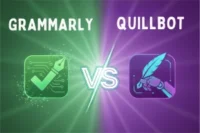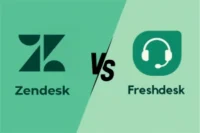Differences Between Google Drive and Dropbox
Published: 10 Feb 2025
Google Drive and Dropbox are two of the most popular cloud storage services. Both help users store files, share documents, and access data from anywhere. Google Drive is deeply connected with Google services, while Dropbox focuses on simple and fast file synchronization.

Let’s explore their differences to help users choose the best option for their needs.
Quick Comparison Table of Google Drive and Dropbox
| Feature | Google Drive | Dropbox |
| Storage Space | 15GB free, paid plans available | 2GB free, paid plans available |
| Integration | Works well with Google apps | Supports multiple third-party apps |
| File Syncing | Slower compared to Dropbox | Faster and more efficient syncing |
| Security | Strong encryption and two-factor authentication | Strong encryption and password-protected sharing |
| Collaboration | Real-time editing with Google Docs, Sheets, and Slides | Supports collaboration but relies on third-party apps |
Google Drive vs Dropbox: Key Comparison
Let’s talk about all the differences between Google Drive and Dropbox in detail:
1. Storage Space and Pricing
Google Drive:
- Offers 15GB of free storage.
- Paid plans start from 100GB to several TBs.
- Storage is shared across Gmail, Google Photos, and Drive.
- Affordable for large storage needs.
- Works best for users in the Google ecosystem.
Dropbox:
- Provides only 2GB of free storage.
- Paid plans offer 2TB or more of storage.
- More expensive compared to Google Drive.
- Best for business users who need fast syncing.
- Dropbox Business plans offer additional features.
2. File Syncing Speed
Google Drive:
- Uses cloud-based synchronization.
- Slower syncing for large files.
- Syncs across multiple devices.
- Requires a good internet connection for fast uploads.
- Works well with mobile and desktop apps.
Dropbox:
- Uses block-level syncing, making it much faster.
- Syncs only changed parts of files instead of the entire file.
- Best choice for large file transfers.
- Ideal for businesses and teams working with big files.
- Faster than Google Drive for file synchronization.
3. Integration with Other Apps
Google Drive:
- Works seamlessly with Google Docs, Sheets, and Slides.
- Integrated with Gmail and Google Calendar.
- Allows third-party app connections.
- Best for users who work within the Google ecosystem.
- Supports Microsoft Office file editing.

Dropbox:
- Supports third-party tools like Microsoft Office and Slack.
- Works with creative tools like Adobe and Canva.
- Does not have built-in document editing like Google Drive.
- Offers Dropbox Paper for note-taking and collaboration.
- Best for teams using different software applications.
4. Security and Privacy
Google Drive:
- Provides SSL encryption for file security.
- Two-factor authentication available for extra protection.
- Google has access to user data for advertising purposes.
- Can be vulnerable to hacking if not properly secured.
- Best for users who trust Google’s security system.
Dropbox:
- Uses AES-256 bit encryption for stronger security.
- Supports password-protected file sharing.
- Has more business-focused security features.
- Zero-knowledge encryption available for business accounts.
- Best for users who need high-security cloud storage.
5. Collaboration Features
Google Drive:
- Allows real-time editing with Google Docs, Sheets, and Slides.
- Users can comment, suggest changes, and track edits.
- Great for teams working on shared files.
- Works well for online document collaboration.
- Google Meet integration for video meetings.
Dropbox:
- Collaboration is available, but editing tools are limited.
- Dropbox Paper allows simple document collaboration.
- Focuses on file sharing rather than editing.
- Supports file version history for tracking changes.
- Good for businesses using Microsoft or third-party tools.
6. File Sharing Options
Google Drive:
- Files can be shared via links or email.
- Users can set view, edit, or comment permissions.
- Files can be accessed without downloading.
- Easy sharing within Google services.
- No password protection for shared links.

Dropbox:
- Allows password-protected sharing.
- Users can set expiration dates for shared links.
- Supports large file transfers better than Google Drive.
- Offers detailed access controls.
- Best for business users needing secure file sharing.
7. Accessibility and Platform Support
Google Drive:
- Available on Windows, macOS, Android, and iOS.
- Works directly from a browser without installation.
- Mobile apps provide full access to files.
- Requires a Google account to use.
- Best for users who prefer cloud-based access.
Dropbox:
- Available on Windows, macOS, Linux, Android, and iOS.
- Has a desktop app with automatic syncing.
- Works better for offline access.
- No Google account required.
- Best for users who need quick file access across devices.
Which is Better Google Drive vs Dropbox?
- Google Drive is best for users who need free storage, real-time collaboration, and integration with Google services.
- Dropbox is better for fast syncing, secure file sharing, and businesses needing advanced storage solutions.

Recommendation: If you work with Google Docs and need free storage, Google Drive is the better choice. If you need fast syncing and secure sharing, Dropbox is the way to go.
Conclusion
Google Drive and Dropbox are excellent cloud storage services, but they serve different needs. Google Drive is ideal for free storage and document collaboration, while Dropbox is best for fast syncing and secure file sharing. Choosing between them depends on whether you prioritize collaboration (Google Drive) or speed and security (Dropbox).
FAQs about Google Drive and Dropbox
Here are some of the most FAQs related to Google Drive and Dropbox:
Google Drive offers 15GB of free storage, while Dropbox provides only 2GB. If you need more space for free, Google Drive is a better choice.
Yes, you can use both services at the same time. You can also link them using third-party apps for easier file transfers.
Dropbox provides password-protected sharing and stronger encryption. Google Drive also has good security, but Dropbox offers better file protection.
Dropbox is faster because of its block-level syncing technology, which updates only the changed parts of a file. Google Drive syncs whole files, making it slower.
No, Dropbox does not have a built-in document editor. However, you can integrate it with Microsoft Office or Google Docs for editing.
Dropbox is better for businesses needing fast syncing and secure file sharing. Google Drive is good for collaboration due to its built-in Google Docs, Sheets, and Slides.
Yes, both allow you to recover deleted files for a limited time. Google Drive keeps them in the Trash, while Dropbox offers file recovery based on your plan.
Yes, you can enable offline mode to access and edit files without an internet connection. You need to activate this feature in settings before going offline.
Yes, Dropbox allows offline access to synced files on your device. You must select files for offline use before losing your internet connection.
Yes, Dropbox’s paid plans are more expensive than Google Drive’s storage plans. Google Drive offers cheaper options with more storage for personal use.

- Be Respectful
- Stay Relevant
- Stay Positive
- True Feedback
- Encourage Discussion
- Avoid Spamming
- No Fake News
- Don't Copy-Paste
- No Personal Attacks

- Be Respectful
- Stay Relevant
- Stay Positive
- True Feedback
- Encourage Discussion
- Avoid Spamming
- No Fake News
- Don't Copy-Paste
- No Personal Attacks





